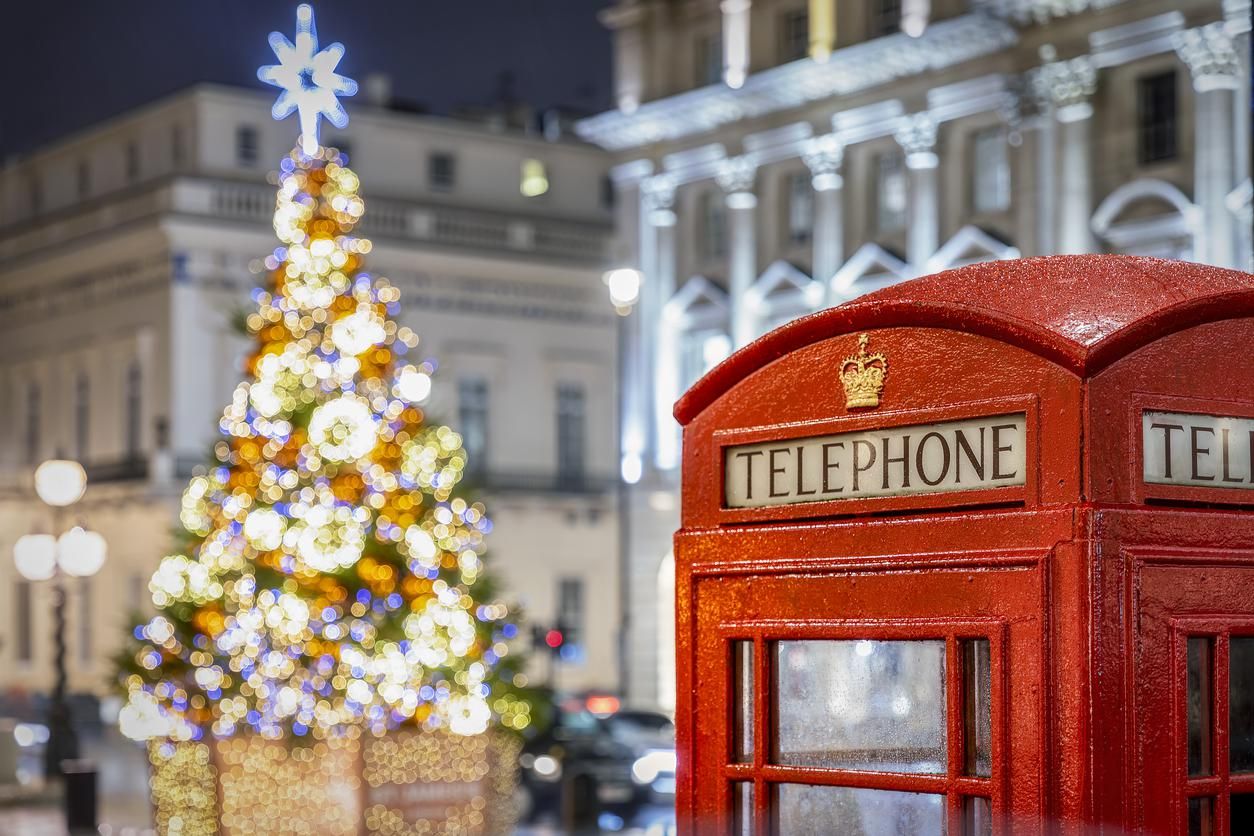What Christmas traditions does Britain have that America doesn't?
Every country celebrating Christmas has its own unique traditions. From trees with spider's webs in Ukraine, to rollerblading to a church in Venezuela; the holidays comes in all shapes and sizes.
It's easy to think of British and American culture being similar. We watch a lot of the same movies and shows, speak the same language, follow similar celebrities - but of course, there are still huge differences.
With travel being nearly impossible this year, I'm spending my first Christmas in America rather than back home in England. With that being said, I've have gathered some festive British traditions the U.S. tends to forgo. If you're an ex-pat, or visitor stranded in the states this year, here are a few things you can bring to your Christmas to feel like you're back in Blighty. And, if you're unfamiliar with these traditions, why not try some out in the name of the special relationship?
Christmas pudding
The fundamentals of Christmas dinner may be the same, but there are some things you can cook to add a British touch to your table.
Christmas pudding, usually drizzled with brandy then briefly set on fire, is a must for any festive British meal. An incredibly dense, boozy cake is probably the last thing you want after a heavy meal, but by-George we'll get through it in the name of tradition. For a lighter sweet snack, mince pies are of course the go-to option. Don't worry, I'm not talking about minced meat. Mince pies are shortcrust pastry pies filled with delicious sweet flavours of dried fruit and spices.
Mulled wine
Mulled wine is a cozy winter staple not just in the U.K., but throughout Europe and the U.S. However, we Brits like to take credit for the warm seasonal cocktail. Also known as spiced wine, mulled wine is often made with red wine along with various spices including cinnamon and nutmeg, and sometimes raisins.
It is served hot or warm.
Although mulled wine was throughly enjoyed throughout Victorian England, it didn't become a holiday tradition until Charles Dickens wrote about it in his 1843 novel "A Christmas Carol." Thus, the tradition was solidified.
Pigs in a blanket
Although not everyone has them on Christmas day, for me pigs in blankets are a must-have. And no, I don't mean a cocktail sausage in pastry. In the U.K,. they're small, cocktail-sized sausages wrapped in savory bacon, rather than the crescent dough version in the U.S.
Traditionally served at the Christmas lunch and often on Boxing Day, these delicious British Christmastime staple pair perfectly with Yorkshire pudding.
Yorkshire pudding
Contrary to what some non-Brits might think, Yorkshire pudding is a savoury treat instead of a sweet one. In America, particularly the South, these are commonly known as popovers. Yorkshire pudding is a baked pudding, made from a batter of eggs, flour, and milk or water, baked in a small cup.
The first recorded Yorkshire pudding recipe appeared in a book called The Whole Duty of a Woman in 1737 and was listed as "A Dripping Pudding." Today, Yorkshire pudding is as popular as ever, whether cooked at home, or eaten at the thousands of restaurants across the U.K.
Crackers
Christmas wouldn't be Christmas without pulling a cracker with the person next to you, reading the bad joke inside, and wearing a paper crown for the rest of the meal. Introduced in the mid-19th Century, the shape of crackers were modeled on the French bonbon sweet, and pulled apart with a bang to reveal the contents.
The Queen's Speech
As a staunch Republican (no, not that kind, the other kind) I never tune into the Queen's Speech. But for many Brits, the annual televised address from Her Maj is a must-watch on Christmas day. Queen Elizabeth II has been delivering annual speeches since 1952, with them first appearing on television in 1957. She has so far missed only one year, in 1969 after the airing of a documentary about the private life of the royal family.
Pantomimes
Hammy acting, audience participation, lewd jokes: nothing says Christmas quite like a pantomime. Going to see one live is near-impossible this year, but if you're new to the world of 'she's behind you!' why not head to YouTube and watch some classic tales retold as pantomimes. Now a British staple, much of what makes a pantomime originated from Italian street theatre in the 16th Century and the world of Commedia dell'arte.
Boxing Day
Christmas doesn't end for Brits when the clock strikes midnight on the 25th. We also celebrate Boxing Day the day after. The term comes from a 19th Century tradition where the wealthy used to put gifts in boxes and give them to the poor. Today, however, it is more common to see people eating leftovers from the day before, lounging around watching TV, or hitting the Boxing Day sales.
Have you got something to say about this subject? Submit a post here and start the conversation.
